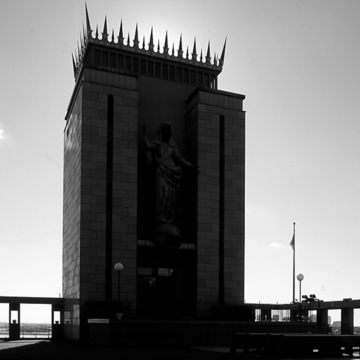A landmark easily seen from throughout East Boston, the Madonna Queen Shrine crowns the top of Orient Heights. The Don Orione Fathers, a Roman Catholic Order, came to Boston in 1949 to establish a home for aged Italians. They first purchased the Italianate house at 150 Orient Avenue, but applications came in so quickly that in 1952 the order
You are here
Madonna Queen Shrine
1956, Mario Bacciocchi. 111 Orient Ave.
If SAH Archipedia has been useful to you, please consider supporting it.
SAH Archipedia tells the story of the United States through its buildings, landscapes, and cities. This freely available resource empowers the public with authoritative knowledge that deepens their understanding and appreciation of the built environment. But the Society of Architectural Historians, which created SAH Archipedia with University of Virginia Press, needs your support to maintain the high-caliber research, writing, photography, cartography, editing, design, and programming that make SAH Archipedia a trusted online resource available to all who value the history of place, heritage tourism, and learning.















